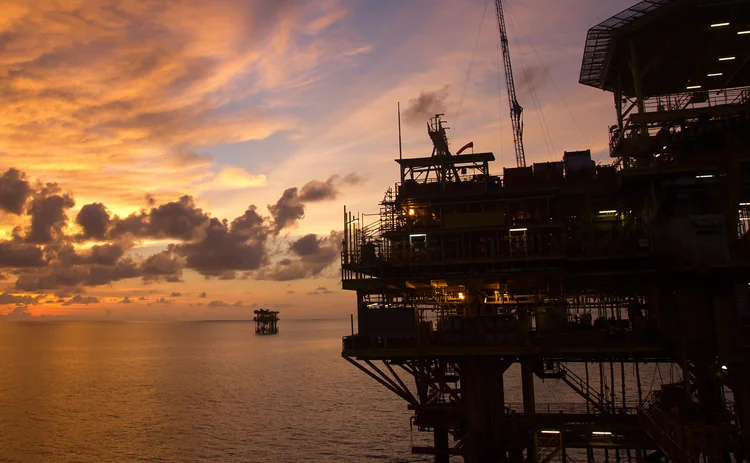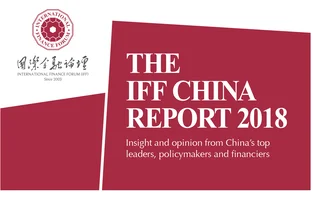
Challenges and possibilities for China’s advancing marine economy
Han Limin, professor at the Management College, Ocean University of China, and Li Dahai, researcher at the Advanced Institute of Marine Development Studies, Ocean University of China, and deputy director of the Strategic Planning Department at the Qingdao National Laboratory for Marine Science and Technology, examine how China’s marine economy can achieve its goal of “building a marine power”


The ocean is essential for human civilisation and bears potential for future development. Faced with such global issues as population growth, diminishing natural resources and environmental disorder, every maritime country casts its eyes to the ocean for a solution. The ocean is becoming a new engine for economic development, a new stage for military conflict and a new ecological barrier to sustainable development. China has attached great importance to marine development. The 18th National Congress of the Communist Party of China (CPC) unveiled the strategic goal of “building a marine power”, and the 19th CPC National Congress announced intentions to “adhere to the overall planning of land and sea, and speed up the construction of a marine power”. In the ‘new era’ of Chinese politics and power, China is on a mission to strategically protect, nurture and understand the ocean, and develop its marine economy.
Resource guarantees for sustainable economic development

Oceans cover 360 million km2, accounting for more than 70% of the earth’s surface. Marine species account for 80% of the world’s known species, providing a rich source of food and medicines for the human population. Marine reserves of oil and gas are about one-third of the world’s total, and reserves of marine gas hydrate are double those of oil and gas reserves.
At the bottom of the deep ocean are extensive polymetallic nodule deposits. It is estimated that the manganese content of polymetallic nodules is 4×1011 tons, nickel 1.46×1010 tons, cobalt 5.8×109 tons and copper 8.8×109 tons – thousands, if not hundreds of thousands, of times greater than global annual average consumption. The world’s total tidal power is about 3×1010 kilowatts, and its wave energy around 7×1010 kilowatts. The exploitable energy of ocean temperature difference is estimated to be 2×1010 kilowatts and the total wind power of the sea’s surficial atmosphere 2.25×1017. Global seawater reserves account for around 1.318×1017 tons – about 97% of all the water on earth. There are more than 80 chemical elements in the ocean, and about 5×1016 tons of all kinds of salt. China’s jurisdictional ocean is about 3 million km2. With the development of marine resources and the accumulation of space as main targets, China’s marine fishery, marine oil and gas industry, marine transportation and other major marine industries are gradually coming to fruition. Additionally, linked development of marine-related industries has formed a large-scale marine economy that is rich in resources.
Phasic characteristics of marine economy development

In 2016, China’s gross marine production was RMB7.05 trillion, accounting for 9.5% of its GDP. From 2011 to 2016, the average growth rate of the gross marine product was 9.1%, which was higher than the average growth rate of GDP. Since 2012, the economic environment’s impact at home and abroad has resulted in the development of China’s marine economy fluctuating greatly. The annual growth rate of the gross marine product during the period of the 12th Five-Year Plan decreased by about 5% compared with that of the 11th Five-Year Plan. The ratio of the gross marine product to GDP remains around 9.5%, which has changed little over the past five years, and has not been fully reflected in the role of fuelling the national economy. The major marine industries are differentiated more obviously – doubly restricted by resources and the market, the development impetus of marine fisheries, the marine salt industry, marine transportation, and other traditional marine industries slowed, as well as the marine oil and gas industry, which has fallen sharply. Correspondingly, the coastal tourism industry continues to maintain rapid development, along with the rapid expansion of marine biomedicine, marine hydroelectric power, seawater utilisation and other emerging industries. There has been a significant change in the structure of the marine industry. In 2015, their added value surpassed the sum of fisheries, salt, transportation and oil and gas for the first time. In 2016, among China’s main marine industries, the proportion of traditionally resource-dependent industries – marine fishery, the marine oil and gas industry, the marine salt industry and the marine mining industry – decreased to 20%, and the proportion of marine manufacturing, engineering construction and emerging resources development industries increased further.
Transitioning and upgrading – The urgent need for marine economy development
Regarding development, the marine economy is resource-dependent, and the advancement of primary products remains key. Of the 10 primary non-services industries, marine fisheries, the marine oil and gas, marine mining, marine salt, marine power and seawater utilisation industries are actively developing means of acquiring marine resources, which accounts for 54% of the added value in ths area. The added value of the marine processing and manufacturing industry contributes only 26%, and the marine engineering and construction industry 20%. Current structural constraints make the marine economy vulnerable in the utilisation of exploitable resources – such as fisheries – and prices of primary products – such as oil and gas.
On the subject of spatial layout, marine economic activities are mainly concentrated on coastal waters, so there is a significant imbalance in terms of the location of development. In recent years, China has increased investment to the deep-sea area, but overall – apart from marine fisheries and marine transportation – the spatial layout that is highly concentrated on coastal waters has not yet changed. In some marine industry zones – especially semi-closed bays and shallow seas around large cities – competition is increasingly fierce, which brings a series of problems concerning resources, the environment and ecology. Spatial constraints are increasingly critical. However, offshore waters and vast, deep oceans – in addition to some fishery resources and channel space resources – remain undeveloped.
From the perspective of factor constitution, China’s marine industry is capital- and labour-intensive, and the role that technological innovation plays in the marine economy must be further strengthened. In the 12 major marine industries, the added value from the five traditional marine industries – coastal tourism, marine transportation, marine fisheries, marine engineering and the marine shipbuilding industry – is as high as 91%, whereas emerging industries – deep-water oil and gas, marine biomedicine, marine high-end engineering equipment, seawater desalination and ocean energy – accounts for less than 5%. Other new resources such as deep-sea minerals, natural gas hydrate and ocean thermal energy have not yet enjoyed commercial development.
Kinetic energy – A new approach to marine economy growth
Reforming and upgrading the traditional marine industry
Scientific and technological innovation is the fundamental driver to breaking through the resource and market constraints and improving the contribution of scientific and technological elements to the development of the marine industry. Marine fisheries should aim for global development of new resources, strict control of the intensity and volume of offshore fishing, increased investment in pelagic fisheries and active participation in global competition for the development of fishery resources from Antarctic krill fisheries. The marine culture industry should use reform to alleviate the increasing saturation of coastal farming space. Offshore marine space should be vigorously expanded, new intensive methods of farming – such as marine ranching and deep-water engineering marine culture – should be developed and new space for marine food growth opened up. The marine oil and gas industry should adapt to the deep-water trend of global oil and gas development, focusing on deep-water marginal oil fields and heavy oil development, and strive to realise equipment autonomy and reduce production costs. The marine shipbuilding industry should focus on ship design, high-value-added marine equipment and environmentally friendly ships, and accelerate its transformation from labour-intensive to technology-intensive industries. The marine chemical industry should prioritise marine oil and gas processing and seaweed chemicals, further prolonging processing chains and enriching product pedigree. The marine engineering and construction industry should seize the opportunities of development of coastal areas and the South China Sea, and acquire key technologies of large-scale engineering buildings such as cross-sea bridges, tunnels, ports and artificial islands to vigorously expand the global marine engineering market.
Speeding up development of strategic and emerging marine industries
Key to new resource development is establishing a technical system of independent intellectual property rights and a corresponding business model. The proportion of emerging strategic industries in the marine industries sector should be enhanced. For the marine biological and pharmaceutical industry, the scale of fundamental research and development – especially the strengthening of pilot experiments and pre-commercialisation – needs to be expanded, and bottlenecks between basic research and commercial applications should be alleviated. The scope of development and application of marine functional foods, biological products and biological materials needs to be broadened. The marine hydroelectric power industry should further push forward its transformation from coastal power to marine power, and draw lessons from the European Union’s business development model of marine wind power, tidal current-generated power and wave energy-generated power, to accelerate the commercialisation of marine energy development. For seawater utilisation, the desalination industry is essential for the following reasons: to meet the energy-saving and emissions-reduction demand of high-energy and water-consuming enterprises; to focus on Chinese islands, offshore platforms and demand for ship-use seawater desalination; to explore low-cost and high-efficiency business models, and gradually integrate the desalination of seawater into the municipal pipe network; and to increase the proportion of the direct daily usage of seawater in big cities. The marine engineering equipment manufacturing industry should prioritise its own upgrading and focus on the acceleration of equipment requirements for development – particularly offshore oil and gas platforms and equipment, construction machinery and equipment, detection and monitoring equipment, and power and seawater desalination equipment – to facilitate the formation of new industrial clusters with strong international competitiveness and on a large scale as soon as possible.
Modern services in the marine service industry
The supporting role of information network technology to the development of marine service industry needs to be strengthened, and the transformation of traditional marine service industries into modern service industries should be actively promoted. The marine transportation industry complies with the trend of combining marine logistics with the construction of the Belt and Road Initiative to increase the efficiency of port shipping via the utilisation of the internet of things, big data, cloud computing and other new technologies to construct a ‘smart ocean’ and a ’smart port’, and to develop a new generation of marine logistics systems.
With its industrial-scale expansion, coastal tourism should seize the opportunity of island development, including via such methods as artificial island construction, marine ranching, establishing deep-water engineering platforms, and the promotion of cruises, yachts and other new, modern carriers, to robustly develop marine sports, leisure fishing, situational experience, high-end resorts and other high-value-added specialty products, promoting a historic leap from coastal tourism to marine tourism. According to the general requirements of building an innovative country, investment in marine science and education should be continually increased, the development of marine scientific research, education, management and service industries accelerated, and scientific and talent support for marine economic development strengthened.
Only users who have a paid subscription or are part of a corporate subscription are able to print or copy content.
To access these options, along with all other subscription benefits, please contact info@centralbanking.com or view our subscription options here: subscriptions.centralbanking.com/subscribe
You are currently unable to print this content. Please contact info@centralbanking.com to find out more.
You are currently unable to copy this content. Please contact info@centralbanking.com to find out more.
Copyright Infopro Digital Limited. All rights reserved.
As outlined in our terms and conditions, https://www.infopro-digital.com/terms-and-conditions/subscriptions/ (point 2.4), printing is limited to a single copy.
If you would like to purchase additional rights please email info@centralbanking.com test test test
Copyright Infopro Digital Limited. All rights reserved.
You may share this content using our article tools. As outlined in our terms and conditions, https://www.infopro-digital.com/terms-and-conditions/subscriptions/ (clause 2.4), an Authorised User may only make one copy of the materials for their own personal use. You must also comply with the restrictions in clause 2.5.
If you would like to purchase additional rights please email info@centralbanking.com test test test







